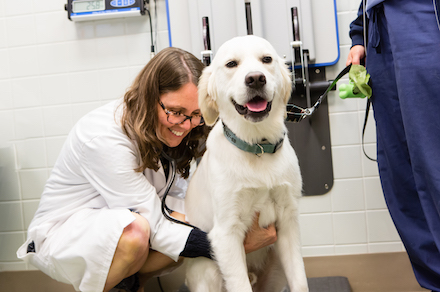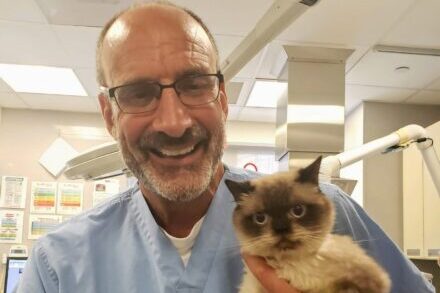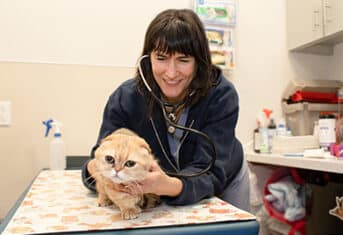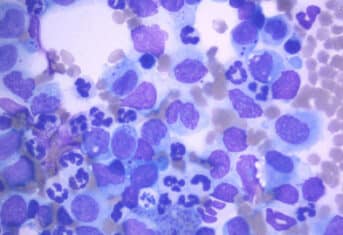When Are Two Intestinal Tumors Better Than One?

When Are Two Intestinal Tumors Better Than One?
This is the fifth in a series of blogs about pets with intestinal diseases.
Otra is a tortoiseshell cat with an unusual name and an unusual medical condition. The unusual name came about when her new family brought her home. They decided to take a couple of days to pick a suitable name. A temporary name of Otra Gata was chosen because Otra was the second cat in the household and otra gata is Spanish for “other cat.” Otra knew it was the right name for her and immediately responded to it when she was called, so it stuck.
Otra first came to see me nearly two years ago with a diagnosis of lymphoma, a commonly diagnosed malignancy of feline patients.
Otra’s health problems started when she was ten years old, just after her family moved to The Animal Medical Center’s neighborhood. They noticed she appeared thin. Otra first met with an internal medicine specialist who eliminated diseases of the thyroid, kidneys, and diabetes as the cause of her weight loss. An abdominal ultrasound honed in on the problem: an inch-and-a-half-long mass of the small intestine. Ultrasound guidance directed a needle into the mass and obtained enough tumor cells for examination under the microscope. The diagnosis: lymphoma.
Cat chemo
Chemotherapy drugs used to treat lymphoma in cats are the same drugs used to treat lymphoma in humans. Otra began treatment just before Christmas and finished six months later. She felt well, acted normally, and was in complete remission. The chemotherapy treatment dissolved the tumor and it could no longer be identified by ultrasound. For the next year, Otra stopped by for weigh-ins and the occasional examination, but mostly we were happy to see her and to see her doing so well.
Thin again
About 18 months after her initial diagnosis of lymphoma, we noticed her weight dropping and an elevation in her heart rate. Blood tests revealed her thyroid was overactive, an everyday diagnosis in geriatric cats. More ominous was the presence of a small mass in her intestine, a half-inch in diameter. We all feared the lymphoma had returned and repeated the ultrasound-guided aspirate. The results were surprising: no lymphoma cells were seen.
A week or so later, the mass was surgically removed from her intestine. The biopsy did not find lymphoma, but a different type of intestinal tumor, adenocarcinoma.
Strange, but true
Otra’s case is doubly unusual. First, a one-and-a-half year remission from lymphoma is very uncommon in cats. Second, two different intestinal tumors in one cat is also uncommon, although Otra’s two different tumors are the number one and two most common intestinal tumors found in cats. This tidbit of information comes from a 40-year review of over 1,100 feline patients with intestinal cancer. In this recently published study, over 600 cats had a diagnosis of lymphoma and just over half that number had the second most common tumor, intestinal adenocarcinoma.
How can two tumors be better?
If Otra’s lymphoma had relapsed, it would have indicated to me the tumor cells had become very clever and developed pathways to avoid the toxic effects of chemotherapy. Treatment would not have been very successful and I would have not been able to offer a very optimistic prognosis. For intestinal adenocarcinoma, the most important aspect of treatment, surgical removal of the tumor, has already been completed and Otra is nearly normal, except for having to wear the dreaded cone to protect the incision.
Because of her quick recovery and the occurrence of a second treatable tumor, we anticipate many more happy months for her and her family.
































